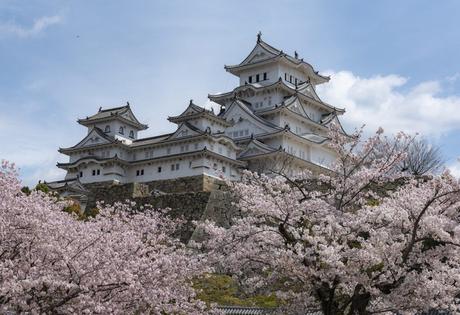
Japan is a country of contrast, with both old and new. As you walk next to a century-old shinto sanctuary, the bright neon glow of the city lights shines . The rushing green fields whipping by the window as you relax in a train. When you go to Japan, you notice that contemporary and ancient appear to be constantly balancing each other; the future and past coexisting side by side in perfect balance.
The freedom to choose new or traditional becomes a balancing activity for a student traveler. Mt. Koya's serene natural beauty may be experienced in a buddhist monastery, as well as the vibrant city life of Tokyo. You may also stay in a capsule hotel and enjoy the lights and sounds of huge, six-story arcades. Use our Japan Travel Guide to help you get the most out of this amazing nation.
Here are 5 things you need to know before traveling to Japan.
Japanese may appear to be a difficult language, but don't be scared; in Japan, many of the signs are written in English or Romaji, which is Japanese words transcribed phonetically using the English alphabet. A few core phrases might come in handy, and most Japanese people would be delighted to assist a tongue-tied vacationer. If someone is quiet when you talk to them, don't worry; they're just disappointed that they can't assist you as much as they want and will flee in order to look for someone who can.
2. Currency & TippingThe Japanese currency is the yen ( ¥ ), which is quite simple to convert to the US dollar in your head; 1 yen equals 1 cent (So, for example, ¥100 is $1.00). Because Japan is as technologically advanced as it is, there are a lot of "cash-only" retail outlets. Make sure your bank will allow you to withdraw money from an ATM in Japan; this will save time and anxiety. Tipping in Japan is considered impolite, so don't give cash to your server.
3. Japanese CuisineIt's an exciting culinary journey in Japan. With a vending machine ordering system, you can locate ramen restaurants with which to order from a machine that produces a card for you to give to the chef. Sushi eateries will convey food on a conveyor belt; whatever looks good, leave it be and they'll calculate your bill based on how many plates you have. Vendors would sell takoyaki, which are tasty octopus balls dipped in fried dough. Returning to college, you'll return home with a list of new favorite meals.
4. Tech TipsIt's tough to keep your phone working while you're in Japan, or at least it is to do so for a low price. There are some free applications like "Travel Japan Wi-Fi," which will allow you to connect and use maps and translation apps, two important tools when lost and don't know the language. Renting a Wi-Fi hotspot device is another alternative, but you may accomplish a lot by just using the free Wi-Fi available at convenience stores, coffee shops, and certain train stations.
5. Cultural DifferencesThere are a few minor cultural distinctions between Japan and the United States. You may usually take off your shoes and put on slippers provided when you arrive at a home or hostel in Japan. Garbage cans are uncommon, so if you find yourself with a food wrapper in your pocket, don't worry; it's probably because you're a foreign student and aren't used to the stringent Japanese customs.
Tourism in Japan
When should I go to Japan?
Late spring and late fall are ideal times to visit Japan. The late spring, between March and May, is when the mythical cherry blossoms are in bloom, the temperature is pleasant, and the rains are less common. This is also one of Japan's most crowded tourist seasons, so be prepared. September through November has similar weather but with a little more rainfall, as well as changing leaves for Autumn. Summers in Japan are humid and hot, while their winters are cold but rarely do they drop below freezing; except for mountainous regions, where it can plummet much lower.The best part about visiting Japan during the winter? The visitors will be fewer, and the costs of travel to Japan are lower.
Is it safe to go to Japan?
In Japan, there is little violent crime, so when you travel to the Land of the Rising Sun, don't be concerned. The country has a well-deserved reputation for being one of the world's safest for visitors, placing in the top 10 on the Global Peace Index. However, it's always a good idea to keep your wits about you when traveling somewhere new. Credit card fraud has been on the rise lately, so make sure you carefully examine any ATMs before swiping your card.It's important to be safe when drinking. You should always keep a clear mind, as at any bar or club. Natural catastrophes like earthquakes and tsunamis can occur rarely, but the odds of you being in the wrong location at the wrong time are minimal. Just in case, make a note of a few critical phone numbers:
- Ambulance and Fire: Dial 119
- Police: Dial 110
- Embassy of the United States, Tokyo: 03-3224-5000
Japan's Many Attractions
It's difficult to choose a few great sites to visit in Japan, but here's our best shot. Tokyo has a thousand things to do, from cat cafés to night clubs, and everything in between. Outside of Tokyo there is stunning beauty to behold as well as distinct little cities with their own flavor.
The tiny, seven-seat bars of Golden Gai are a maze in the Shinjuku area of Tokyo. You will undoubtedly make connections with the individuals on either side of you here since it's impossible to avoid rubbing elbows with ex-pats and locals.
Mt. Fuji is well worth the effort, so bring some boots. This icon of Japan, which is both beautiful to look at and visit, is just a train journey from Tokyo. It's an excellent day trip to get you out of the city and back to nature.
You may stay with monks on Mt. Koya, who will treat you like an honored guest. With shrines and a temple arrayed along the top of the mountain's ancient burial ground, go around the area and eat vegetarian monk food.
Dōtonbori is a canal-centric area in Osaka known for its brilliant neon advertisements, where you can eat, buy, or simply enjoy the electric display of the Glico sign, which is regarded as Osaka's symbol.
If you're visiting Akihabara, Tokyo and want to play some video games, look for the huge structure with the Space Invader sign outside. You'll be assaulted with sights and sounds of five full floors of gaming pandemonium at Tatio station.
Nara Park, which is now the capital of Japan after being Nara's main city for a long time, has deer that have become so used to humans that they will bow towards you and ask for a "deer-cracker." Give the deer a snack, return the bowing.

